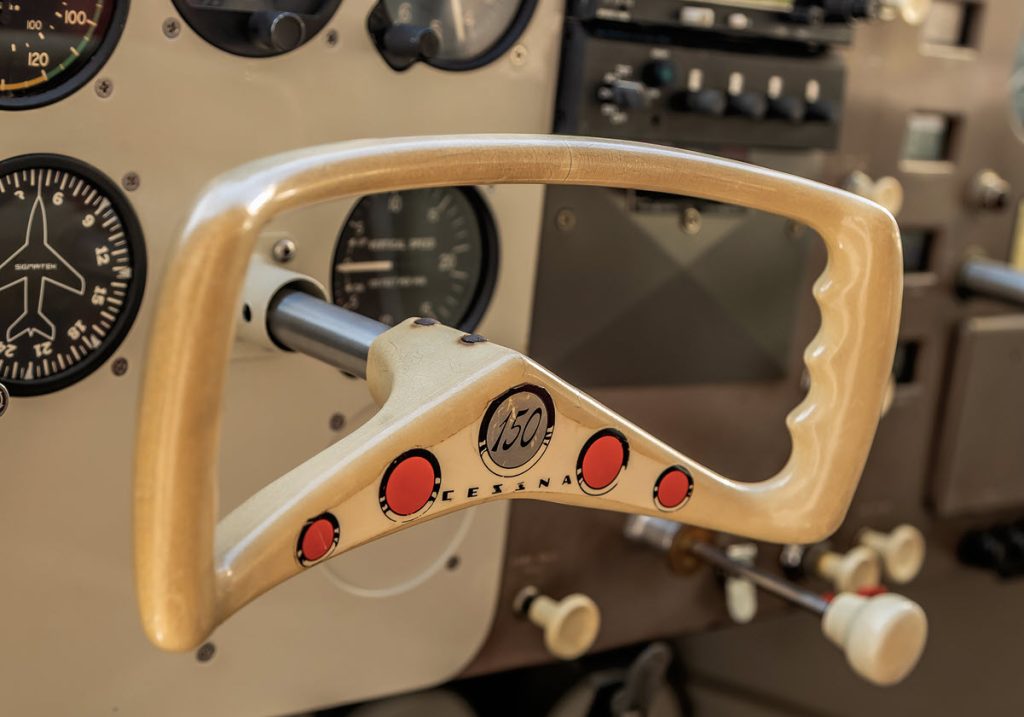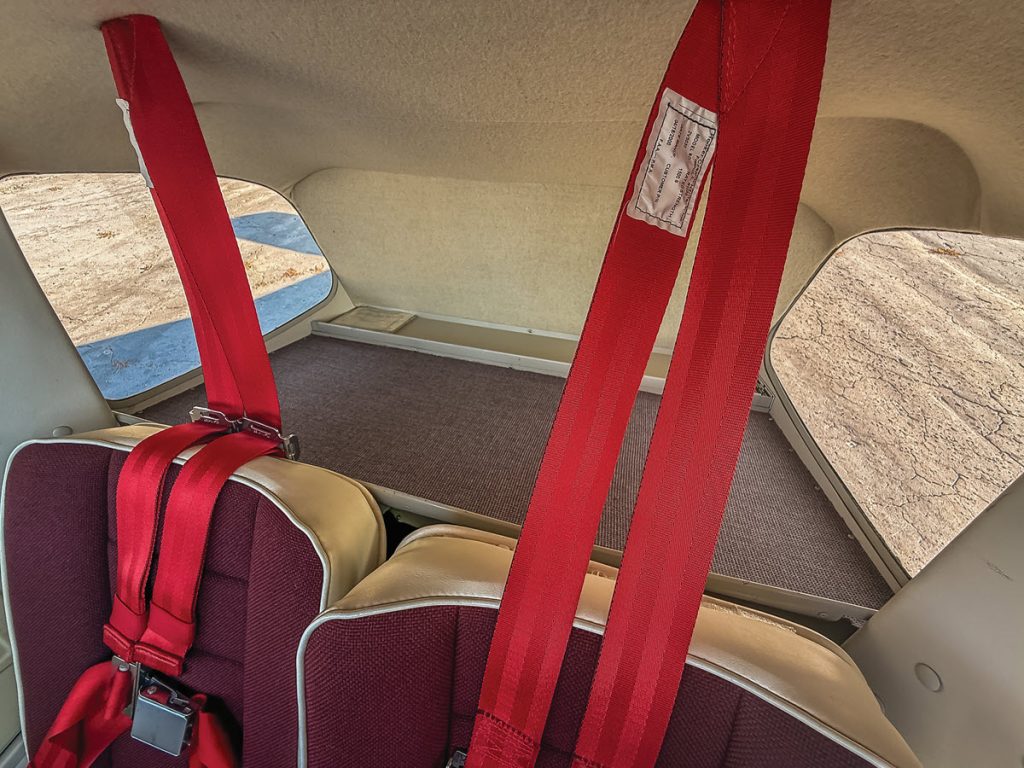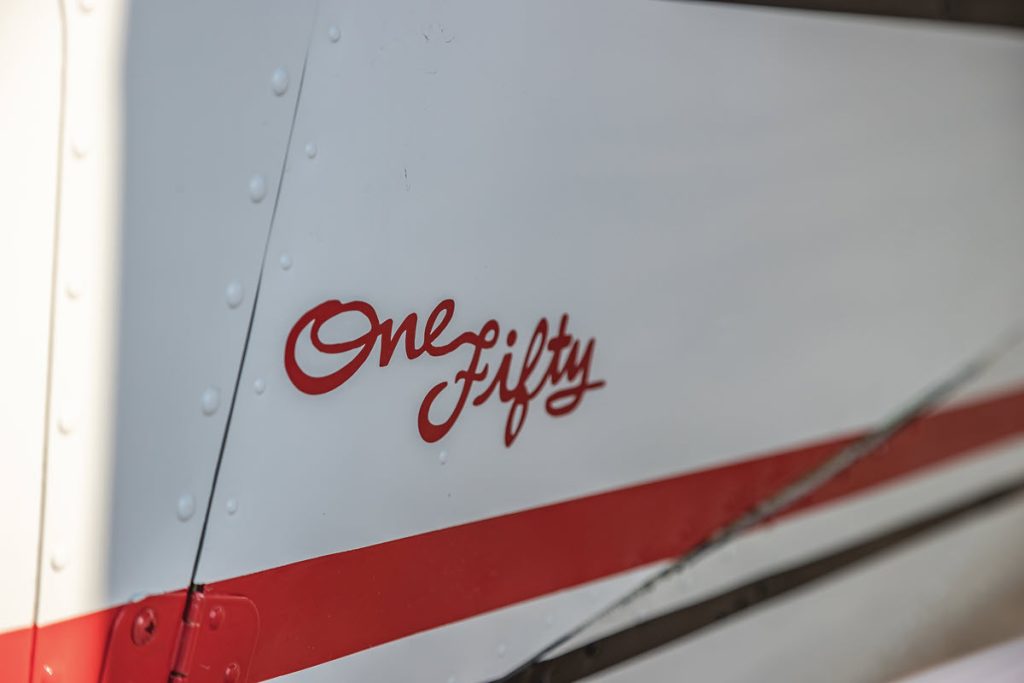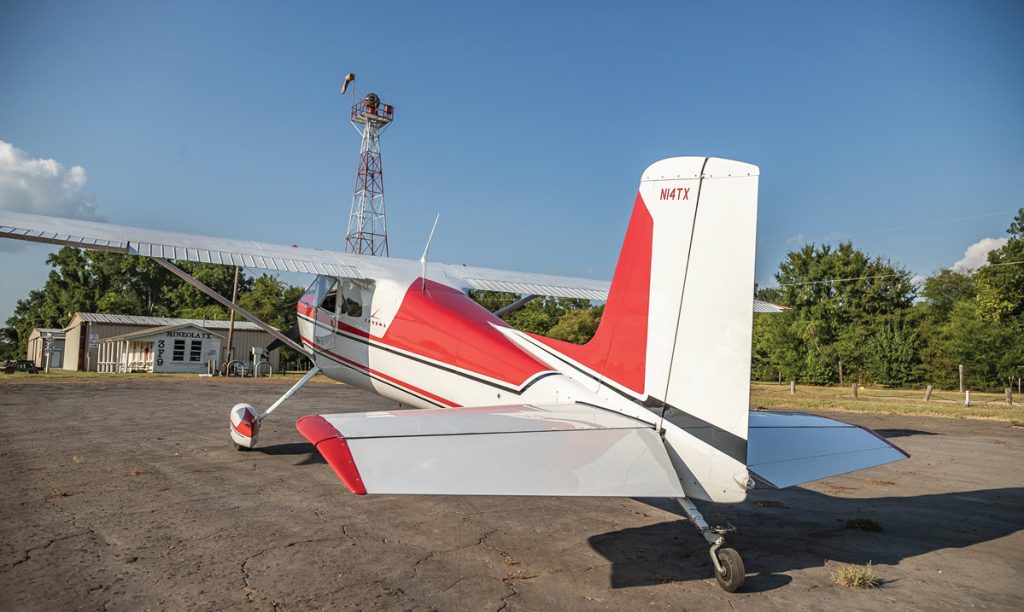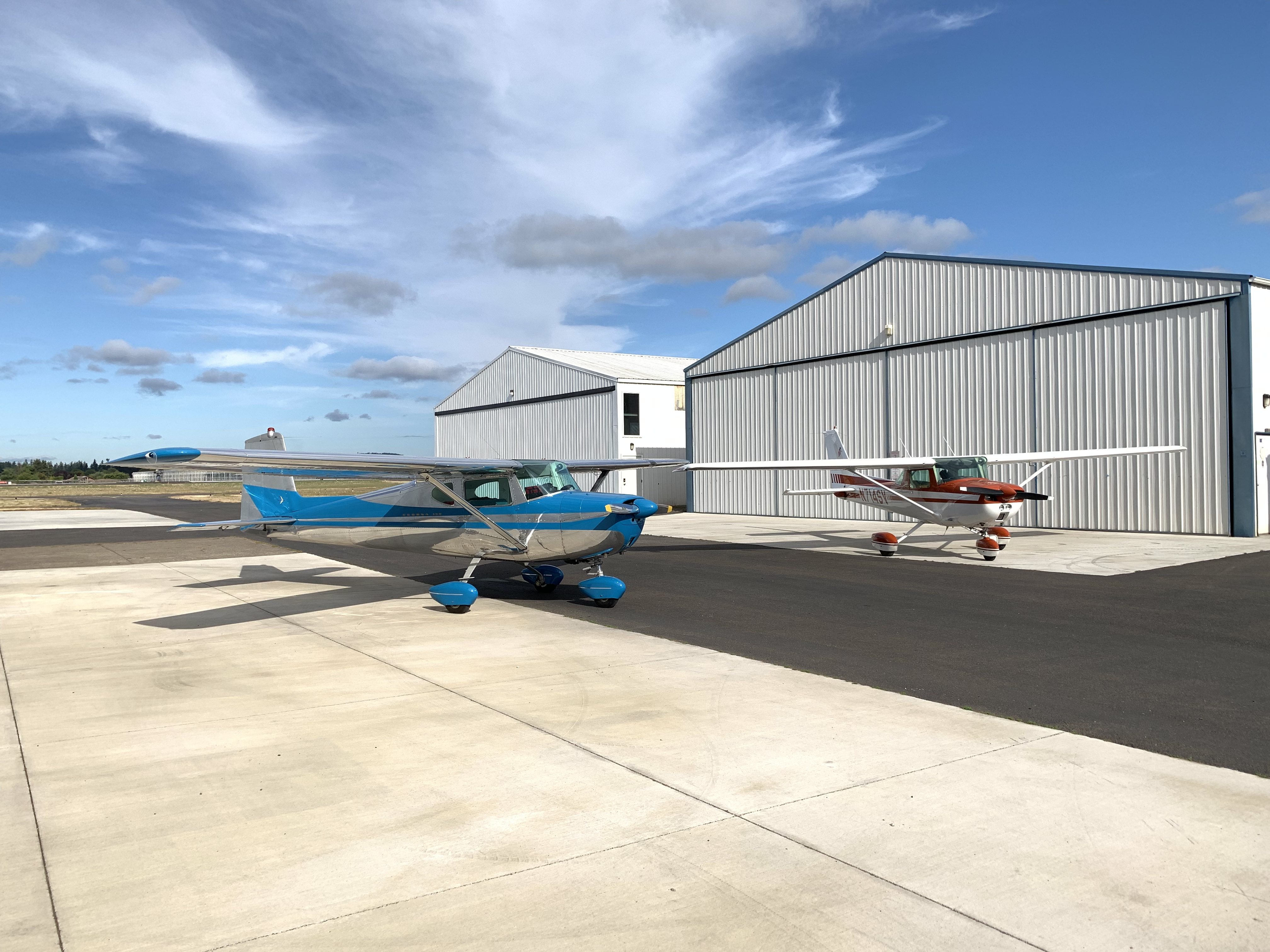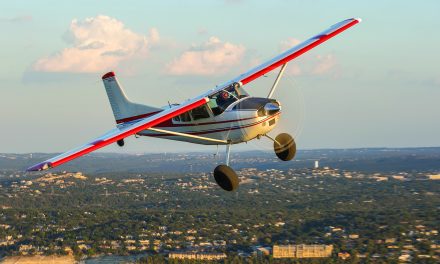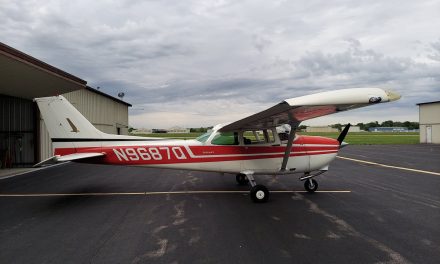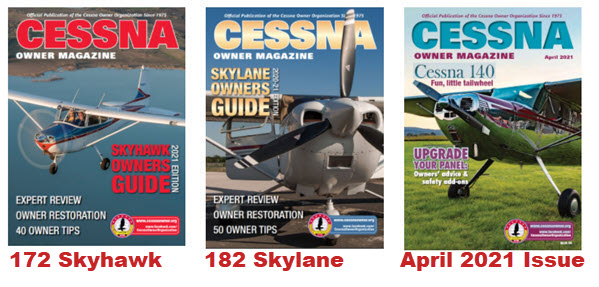
By Michelle Adserias
Bob McBride was immersed in the aviation world from infancy. When he was just two weeks old, his parents took him on his first plane ride. They went to visit his grandparents in the Globe Swift his family owned, the same plane that served as a somewhat crowded family aircraft in the years that followed.
Bob’s father was a career Air Force fighter pilot. His mom held her PPC and also enjoyed flying. Over the years his parents owned a variety of airplanes; the Globe Swift, Navions, Bonanzas, and a Piper PA-12. It’s somewhat surprising, given his upbringing, that Bob didn’t pursue his license until he was out of college. “My parents said, ‘Why don’t you learn to fly?’ So I got my license and have been muddling around planes ever since,” Bob said.
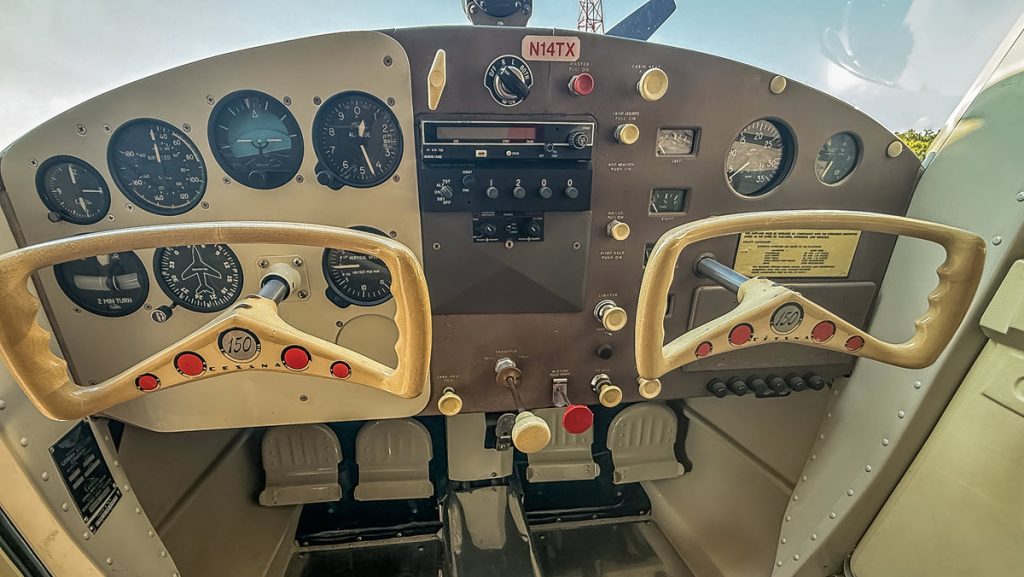
In fact, muddling around planes appealed to Bob so much, he became an aircraft mechanic and inspector. He has his own shop at Austin Executive Airport (KEDC) called Chuck’s Aircraft. Why not Bob’s Aircraft? The business name pays homage to a well-loved airport dog that departed this earth in 2012.
Why the Cessna 150?
The first airplane Bob owned was a Cessna 140 that he and his dad trailered home from Indianapolis. He restored it, painted it and flew it for many years, and it served him well. But driven by a desire to help his mom continue flying safely, he began the search for a Cessna 150.
His mom had always loved flying the Piper PA-12, a three-seat airplane from the 1940’s. As she got older, however, she found it more difficult to land the aircraft if no one was in the back seat. It was too light for her to get enough nose-up trim for a nice landing flair. A Cessna 150 would be lighter on the controls and easier for her to handle. The only catch? His mom had always flown taildraggers.
Fortunately, they found what they were looking for in Mountain City, Tennessee. Bob purchased the Cessna 150. Then he, his dad, and his brothers drove from Texas to pick it up. The airplane was in pieces. Structurally, it was sound but it had suffered from neglect over the years. The plexiglass was damaged, the plastic parts were brittle, and the “ugly” paint job had some “bizarre colors” in it. They reassembled it in one day and Dad flew it home. There was no doubt this 1963 Cessna 150C, N14TX, would need a full restoration. And it would need a tailwheel conversion.
N14TX Gets a Makeover
The family decided on a Lowe Cessna 150 Taildragger Conversion, an STC developed and owned by David Lowe. This very stylish conversion was specifically designed for 1959-1963 Cessna 150s. What makes it stylish? Rather than just turning the landing gear around, it allows the owner to install actual Cessna taildragger parts by taking advantage of the fuselage design features it shares with the Cessna 140 — a taildragger. Furthermore, it works with the aircraft’s aesthetics, which includes cabin doors sloped slightly upward so they are level when the plane is in a tail-low position.
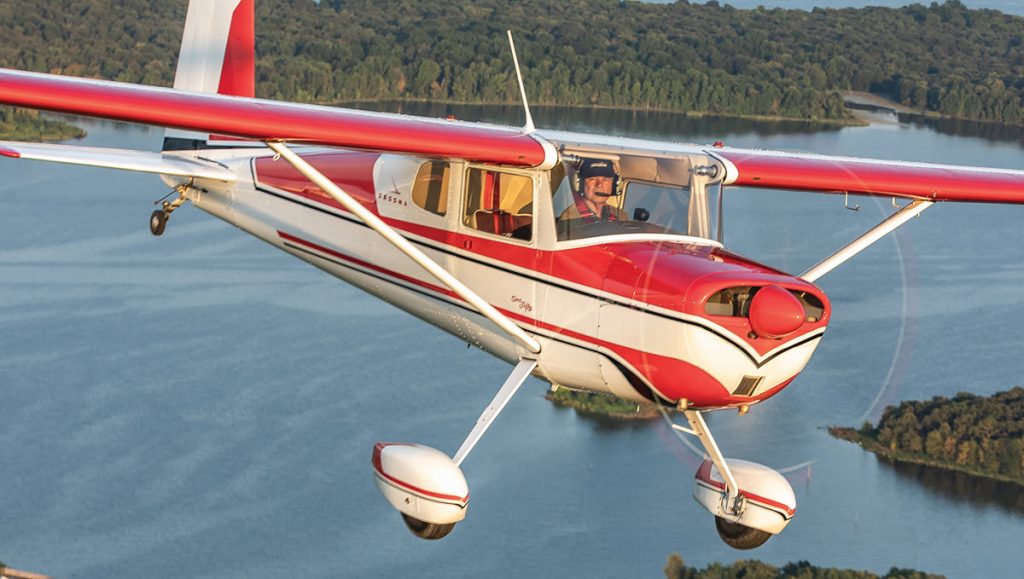
Greatly simplified, the conversion involved removal of the floor pans and installation of Cessna 120 or 140 gear boxes in the forward bulkhead, then removal of one of the bulkheads in the rear and replacement of the other gear box. Then holes must be patched, support stringers added, and the engine mount must be replaced with a 140A mount, or modified to remove the nose gear supports.
Bob was able to salvage the needed parts from a Cessna 120 that had an unfortunate collision with some high wires (thankfully, no one was hurt). With some direction from David Lowe along the way, he completed the conversion. The bulkheads under the pilot and copilot’s feet still had the structure and strength for the new landing gear to be installed and he added structure to the tail to accept the tailwheel mount. He also replaced the engine mount, which had the original landing gear attached. After making the needed changes, he drilled off the airplane’s belly so there wouldn’t be any holes from the old landing gear.
N14TX needed far more than a tailwheel conversion. It needed a makeover. “It wasn’t a salvage project. In fact, like I said, we put it together in one day and my dad flew it home from Tennessee to Texas, so it was airworthy. It just wasn’t a show plane,” Bob said.
So, while the skins were off, Bob did a full restoration. Bob checked the engine to be sure it was in good working order. He replaced all the plexiglass, painted the firewall and all the interior surfaces, put in new upholstery, and installed new carpeting. They took out all the old, junk radios and upgraded the lefthand side of the panel with a new Navcom. “The panel is completely original on the right side and pays homage to originality on the left side, but it’s a solid panel without the plastic façade on it.” Then they added Hooker Harnesses as a safety measure.
Then Bob stripped off all that colorful paint and gave N14TX a new look. Bob is partial to the original paint scheme on the 1955 Cessna 180. Since the 1963 Cessna 150C also had a straight tail, he decided to paint it like a mini-180. That once rough-looking old lady is now a real head-turner. “It’s a great looking airplane and attracts a crowd.” In fact, it has won two Lindy Awards at EAA’s AirVenture.
With all the work Bob has put into it, this Cessna 150C doesn’t just look good. “It’s just a good, all-around fun airplane,” Bob said. It’s light on fuel, using about 4.5-5 gph at about 100 mph, and a delight to fly. It can cruise at almost 120 mph in smooth air at a reasonable power setting and has a fairly good range. Reasonable insurance costs are a plus, too.
It’s also equipped to offer forgiving landings. “If you kinda misjudge the landing a little bit it’s got the Wittman Springsteel gear so you can get a heck of a bounce out of it. You just add a little power and settle back in and you don’t look too foolish.”
Maintenance is easy, and parts are readily available. Because Bob has his own shop, he’s able to get new parts wholesale, but he also depends on BAS Part Sales in Greeley, Colorado, “a great company,” and locally turns to Texas Aircraft Salvage for used parts.
The only potential drawback is its size. It’s a cozy little aircraft! Two larger people would probably feel crowded in the cockpit and there is limited room for luggage — though not to crowded to allow Bob and a copilot to bring it to EAA on several occasions.
A Labor of Love
Restoring N14TX was truly a labor of love. The whole family wanted to give his mom new wings so she could continue flying as long as she was able. And she did. Bob will never forget her appreciation the day they presented it to her.
The icing on the cake was when she was able to travel with the Cessna 150 to AirVenture in 2004, even though she had open heart surgery earlier in the year. The plane was parked in a prominent spot with the vintage aircraft and drew the attention of well-respected aviation writer, Bud Davidson. He featured the plane, along with a photo of the whole family, in an EAA magazine.
N14TX now resides in Minneola, Texas, on the farm Bob inherited from his parents. He enjoys flying it around the Central Texas lakes region, touring the lakes and sightseeing from above. He’s part of an ad hoc flying group, The 100 MPH Club. This small group of friends flies together as often as possible — which is far less often than their busy schedules allow. Still, it continues to bring the freedom and happiness built into its original mission.
THE CESSNA 150C
When Cessna rolled out the 150 in 1959, it was promoted as the “world’s premier trainer.” While many of its features were based on its forerunners, the 120 and 140, it featured some important design changes. Side-by-side seating made it a better training aircraft because it was easier for instructors and students to communicate. And the tricycle landing gear made ground handling and landings easier.
There were four different versions of this all-metal aircraft; Standard, Trainer, Commuter and Patroller. The Trainer featured dual flight controls and a more complete set of flight instruments than the Standard. The Commuter offered a step up in style with a nicer interior and wheel fairings. The Patroller was more utilitarian, designed for jobs like inspecting pipelines in the Alaskan bush.
The Cessna 150C went through several transformations over the years. In 1961, the main gear struts were moved aft to address its tail-heavy tendency when not in flight. A back “Omni-Vision” window, to improve visibility, was added in 1964. 1966 brought a change in the design from the original straight tail to a swept tail. And over time, Cessna took measures to increase cabin and baggage space.
More than 22,000 Cessna 150’s were produced before it was replaced by the 152 in 1978. It was, and continues to be, a fixture in the flight training community.
Have a website login already? Log in and start reading now.
Never created a website login before? Find your Customer Number (it’s on your mailing label) and register here.
JOIN HERE
Still have questions? Contact us here.

